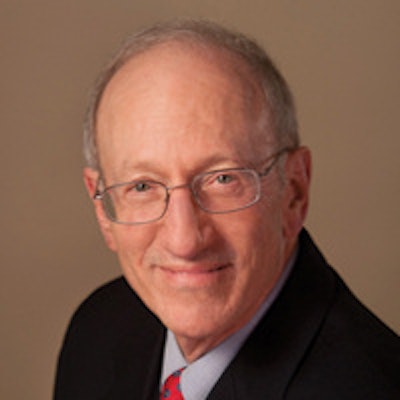
On September 18, AuntMinnie.com reported on a study from the University of California, San Diego that was presented at the American Society for Radiation Oncology (ASTRO) annual meeting. The study asserted that Medicare reimbursement rates for freestanding oncology facilities far surpassed those for hospital-based centers.
Regrettably, the researchers exclusively analyzed data from patients treated between 2004 and 2009. While the findings could be accurate for that historical era, the study provides a grossly inaccurate and misleading picture of Medicare payments to freestanding radiation oncology facilities over the past five years.
 Dr. Paul Wallner, senior vice president of 21st Century Oncology.
Dr. Paul Wallner, senior vice president of 21st Century Oncology.The study implies that freestanding radiation oncology facilities receive higher Medicare reimbursement than those in hospital settings, though that observation is totally inaccurate. In fact, since 2009, freestanding oncology facilities have faced significant payment reductions, and they now receive substantially lower Medicare payments than hospital-based radiation oncology facilities.
It is not constructive to use historical data that do not accurately reflect today's payment reality, especially when current data are readily available. Health services researchers should focus on providing the public and policymakers with up-to-date, relevant information that inspires constructive discourse and ultimately contributes to logical and pragmatic policymaking, rather than using historical, invalid information that serves no purpose other than to confuse contemporaneous dialogue.
Radiation oncologists and the freestanding facilities where they administer care play a vital role in ensuring access to life-altering, state-of-the-art radiation therapy. While those battling cancer may live hours away from a properly equipped hospital, freestanding facilities are located in communities dispersed throughout the U.S., making radiation therapy more accessible to cancer patients. Frequently, these centers are the only practical choice for patients who need to receive radiation therapy.
Over the past decade, freestanding radiation oncology centers have suffered a cumulative 20% cut in payments and are facing an additional cut in payments in the 2015 Medicare Physician Fee Schedule Proposed Rule issued by the U.S. Centers for Medicare and Medicaid Services (CMS). According to CMS, these cuts would amount to a 4% cut to radiation oncology and an 8% cut to (freestanding) radiation therapy centers. If reductions of this scale are allowed to take effect, they will almost certainly disrupt patient choice and access.
A decade of deep and severe Medicare cuts has created challenges for freestanding radiation oncology facilities struggling to maintain staff, upgrade equipment, and maintain a high quality of cancer care delivery. In 2013, a leading freestanding radiation oncology provider declared bankruptcy because of these cumulative Medicare reimbursement cuts. Adding more cuts for freestanding radiation oncology facilities would not save taxpayers money; it would likely cause a shift in care to the hospital setting, where such services would cost almost 20% more, on average.
Volatility in Medicare payments is not appropriate in any setting, and a site-of-service differential in payments isn't right when the direct costs for providing patient care are similar in both settings. The radiation oncology community would be best served by a new payment system that ensures stability in payments under a fee schedule that pays the same rate regardless of point of service.
The first step in this process is to inform our collective discourse with accurate, up-to-date data. Only in that circumstance will we be able to consider our options for ensuring that our nation's most vulnerable populations -- those suffering from life-threatening diseases such as cancer -- are protected.
Dr. Paul Wallner is senior vice president of 21st Century Oncology, headquartered in Fort Myers, FL. The physician-led company operates 179 treatment centers, including 150 centers located in 16 U.S. states.



















